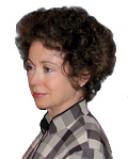Identity
Our Evolving Sense of Identity
Recent discoveries about the self: What are they?
Posted October 16, 2016

As science advances, we are discovering that our traditional sense of self is too narrow to encompass the complexities of what create an identity. We long believed we had five senses; now we know we have at least twenty-one. In Frames of Mind, Howard Gardner revealed we have seven different kinds of intelligence and two forms of personal intelligence. Daniel Goleman made us aware of emotional intelligence.
This understanding of intelligence as multi-faceted rather than singular, mirrors our increasing awareness of the complexities of sexual identity. Society is gradually accepting the rights of LGBT community, whose concept of sexuality is more reminiscent of that of pre-monotheistic times. This poses the question as to whether or not monotheistic religions, with their sense of oneness and indivisibility, contributed to suppressing a more complex understanding of the world, the self, and even the nature of the divine.
Not only has human intelligence and sexuality been revealed to be far more complex than we had imagined, even our understanding of the way we communicate is being radically revised. There is a sea of books on conscious and unconscious body language: the current most popular are What Every BODY is Saying and The Definitive Book of Body Language. Elizabeth Mayer, a psychoanalyst, tackles Extraordinary Knowing: Science, Skepticism, and the Inexplicable Human Mind—ESP— from a scientific viewpoint.
We have long intuited that there is a form of human communication we simply do not understand. Ancient cultures took this for granted, but with the Age of Reason and the Scientific Revolution, anything that could not be proven was questionable, at best. With good reason, Freud would not discuss extraordinary knowing (ESP, etc.) because he was afraid budding psychoanalysis would lose credibility—not because he did not think ESP was a phenomenon worth investigating.
Dr. Mayer interviews numerous scientific experts, including psychoanalysts, surgeons, and highly regarded scientists in different fields about extraordinary knowing to reveal a startling amount of incontrovertible research conducted by highly regarded scientists, and even our own government, that proves humans are capable of extraordinary knowing—a.k.a. anomalous knowledge, ESP, clairvoyance, intuition—sometimes. Studies also indicate some of us have a greater ability than others. Mayer notes studies at the Rhine Research Institute, formerly part of Duke University, and the universities of Columbia, Princeton, Stanford, Shanghai Jai Tong, Freiburg, Edinburgh, and even the CIA.
All of us have family or friends’ stories about an unexplainable transmission of knowledge: a dream about someone far away, an intuition about how to solve a problem, the list is unending. Dr. Mayer cites numerous cases from analysts who dream of what their patients experienced—telepathic dreams that occur so frequently, they cannot be explained by mere chance. Now that scientists can prove human being are capable of attaining anomalous knowledge, the unanswered question is how do we do this. There are only conjectures.
In Social Intelligence: The New Science of Human Relationships, Daniel Goleman explains that our brains have mirror neurons that reflect what we see in others. This explains why watching sports can be so addictive and exhilarating for sports fans: they are sensing the action with their mirror neurons. The same is true for listening to music being played or watching actors on a stage. Because of mirroring, we literally experience the other physically as well as mentally.
Mirroring links us on an emotional as well as a physical plane. Could this physical-emotional bond have deeper ramifications we don’t yet understand? Could mirroring be a glimpse into a much more complicated phenomenon of human communication? We obtain knowledge through experience and education and transform it into a physical ability, a mental abstraction, and/or emotion(s). Our existence is a paradox that unites body and mind—the physical and the intangible.
Synesthesia provides another example of how our senses can affect our perception. Imagine seeing numbers or music in color or tasting numbers or smelling colors. Individuals with mirror-touch synesthesia literally feel it when someone else is touched—a biological example of empathy. Some individuals feel the emotions of others so intensely, they cannot watch cinematic violence because it is too real for them physically—another form of empathetic synesthesia. There is a long list of musicians with synesthesia (e.g. Liszt, Bernstein, Duke Ellington, Billy Joel). Interestingly, artists score higher than the general population in tests for extraordinary knowing with musicians testing the highest. Is this because artists are dealing with emotional sensations created by the voice, color, or sound? Why do musicians test the highest of all for anomalous knowledge?
In A Thousand Days of Wonder, psychologist Charles Fernyhough discusses infant neurological tests that suggest synesthesia is not that unusual in infants. Since Rousseau’s Émile (1762), philosophers have speculated that infants may only gradually differentiate the senses, which means their perception of the world is vastly different from that of an adult. It appears that some adults retain various forms and degrees of infantile synesthesia.
Great writers have an amazing ability to incarnate a character—an ability that allows the author to become his characters to the point that many authors admit their characters sometimes take over their creative process and force stories in directions they had not envisioned or intended. In these cases, another persona or self-state overwhelms that of the author. What about actors who submerge their own personalities to become someone else when they play a role? Great writing and great acting require an ability to either suppress the self to become another. Are these artistic, controlled forms of access to different self-states or even, in the most extreme cases, an artistic form of MPD? Do these abilities utilize some sort of synesthesia as well as psychic repression?
Very complex forms of synesthesia interweave multiple senses. Perhaps the greatest writers and actors have a very complex form of a psychic synesthesia that we do not yet understand. Does the incredible ability of great writers like Shakespeare to inhabit clashing characters, social classes, and religious beliefs stem from a complex form of synesthesia?
Great psychics describe an emptying of the self that allows them to gain information that is usually not available simply because it is buried by the noise and distractions of everyday life. This suggests that there are different planes of consciousness. In Extraordinary Knowing, Dr. Mayer searches for scientific clues to help us understand how multiple planes of reality can exist with Gestalt psychology. The example she gives is the image that is seen either as a vase or two profiles. Very few individuals can see both simultaneously. We order our world to see what makes sense to us, which means we have a natural tendency to eliminate or disregard what doesn’t make sense to us.
Dr. Mayer also notes studies about prayer done at Duke University Medical Center, published in The Lancet, and at Columbia University’s College of Surgeons and Physicians that discovered patients who were prayed for did better than those who were not prayed for, even if the patients did not know they were being prayed for. Physicians have no idea how or why this distant healing is possible. The placebo effect is another curative process not understood. Psychoneuroimmunology (PNI) —also known as psychoendoneuroimmunology (PENI) or psychoneuroendocrinoimmunology (PNEI)— studies the interaction of the psychological, the neurological, and the immune systems. Dr. Mayer wonders if the key to all these enigmas may not be found in quantum physics—the study of the smallest physical dimensions.
Chaos theory provides the concept of the butterfly effect—that small changes, like the beating of a butterfly’s wings can have dramatic effects over time. Like extraordinary knowing, we know the butterfly effect exists; but both remain beyond our understanding and control. The butterfly effect and extraordinary knowing suggest there are complex relationships in both the physical and mental dimensions that we do not understand
String theory maintains that on the smallest physical level, everything is interconnected. If everything is connected, the world is, indeed, a much more complicated place than previously imagined. According to string theorists there maybe as many as 11 dimensions. In the meantime, string theory remains a theory until proven by research at the Large Hadron Collider in Switzerland. Quantum theory asserts “there is no fundamental difference in the makeup and behavior of energy and matter.” Like string theory, quantum theory also posits a multiplicity of dimensions popularized by Stephen Hawking and Richard Feynman.
In The Hidden Life of Trees (Sept. 13, 2016), Peter Wohlleben reveals that trees communicate with one another to create microclimates to help control the weather, to protect one another against pests, even to keep ancient stumps alive. Trees are “social beings” with brain-like structures at their root tips and the ability to communicate with one another. In Extraordinary Knowing, Dr. Mayer provides proof that human beings are capable of something similar which we do not yet understand. This new understanding of the self is so difficult because it challenges our now ingrained concept of fixed boundaries—boundaries between individuals as well as boundaries in time and space. We know things we can’t explain. We don’t have the answers, but we know our existence is a much more multifaceted and beautiful creation than previously thought. What can we make of all of this? Imagine a life without physical barriers: think big—banish borders, mesh entities.




